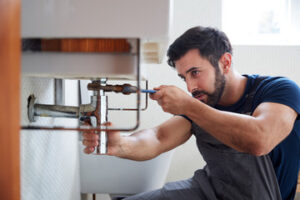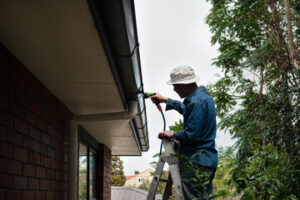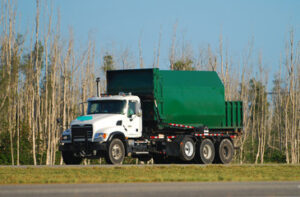The behind-the-wall plumbing system in your home serves two primary functions: supplying fresh water and draining wastewater. This system includes water-supply pipes, drainage pipes and fixtures like faucets, toilets and tubs.

Mastering residential plumbing can help you save money on costly repairs and improve your home’s value. Contact Dunedin Plumbing for professional help.
Residential plumbing refers to the pipes and fixtures that supply clean water to your home. It’s important to understand how your home’s plumbing works, so you can spot any issues and make timely repairs.
Residential systems have two primary functions: supplying potable water and removing waste water. Water supplies come into your house through a large pipe called the main line, which usually runs parallel to the street. From there, a series of smaller pipes distributes water throughout your home’s interior. These include supply lines, distribution lines, drain pipes, traps, vents, and backflow prevention devices. The system also includes a water heater, which heats up and stores water for use in your fixtures and appliances.
Each of these components has its own role in ensuring that you always have a steady flow of freshwater. The main line ensures that water pressure remains consistent throughout your home, and valves prevent water from entering fixtures if the pressure becomes too great.
While the water is flowing through your pipes, it must be filtered through a series of filters and other equipment to remove any debris or contaminants. Then, your plumbing must dispose of wastewater, which goes through a series of pipes and tanks before ending up in the sewer system or septic tank.
Commercial plumbing deals with larger buildings such as office buildings, apartment complexes, and retail spaces. These facilities typically have more toilets, sinks, and showers than a single-family home, which means they require a more extensive plumbing system to meet the demands of the occupants. Additionally, they often have to deal with more frequent maintenance and emergency services due to higher usage rates.
A good commercial plumbing system is designed to accommodate the needs of a variety of different occupants and varying water usage patterns. It also includes backflow prevention devices to prevent wastewater from contaminating the public water supply. Commercial plumbing systems are also built with more durable materials to withstand heavy usage and a higher volume of water flows. These include cast iron, steel, and copper pipes.
Drainage
When you use water in your home, it needs to leave through drains. This is why the drainage system in your home is separate from the water supply system. While the supply system relies on pressure to push water through pipes, the drainage system uses gravity to remove wastewater from your home. The drainage pipes are angled downward to encourage this process; the waste is then carried to the sewer line, or your septic tank if you have one.
Your plumbing system includes a venting system to keep the drainage and supply systems from mixing. Without this, your sewage would back up into the house and could cause health problems as well as foul odors. The venting system consists of a series of capped pipes that extend from the drain lines at each fixture. The capped pipes protrude through the roof; they are also covered to keep rain and animals out, but allow air in.
The waste from each fixture is piped to the house drain, which is connected to the main sewer line through a slope. From there, the waste goes to your city or county’s sewage system or your septic tank if you live on a private septic system.
Another part of the drainage system is surface water drainage, which collects and channels rainwater and other runoff from your property into a storm drain or soakaway. This prevents the floodwater from entering your drains and causing damage to your home or yard.
If you have a problem with the drainage system in your home, it’s important to know who is responsible for it. If the issue is with the sewage system or sewer line, it’s your local water company’s job to fix it; however, if the drainage problem is in your home’s drainage system, it’s the homeowner’s responsibility to get it fixed. In rented properties, it’s a good idea to get the landlord’s permission before making any changes to the drainage system. This will prevent you from voiding your lease agreement should you need to make repairs.
Water Heater
The water heater in a home is an important part of the residential plumbing system. It heats up the water for use in fixtures like sinks, showers, and tubs. The water heater is usually a tank-style unit, but it may also be a more modern, energy-efficient model. A plumbing contractor can help you choose the best type of water heater for your house.
The plumbing system in a home needs to be maintained properly to keep it working efficiently. Regular inspections should be done to detect any leaks or other problems. In addition, homeowners can take a few simple steps to prevent plumbing problems from occurring in the first place.
Leaking Faucets: A leaking faucet could be due to a worn-out washer or seal. Replacing these parts can fix the problem.
Clogged Drains: Hair, soap scum, food particles, and other debris can clog drains. Regularly cleaning drains can help prevent clogs.
Running Toilets: A running toilet can be caused by a flapper or fill valve that is worn out or faulty. Fixing these issues can stop the toilet from running.
Low Water Pressure: Mineral buildup in pipes can cause low water pressure. Using a water treatment system can address the issue.
Septic Systems: A septic system is a private sewage treatment system for a home or small business. The septic system consists of a large concrete or steel tank that holds the waste, and a pipe that takes the waste to a drainage field or disposal pit.
A plumber can help with the installation and repair of a septic system. A plumber can also inspect the septic system to ensure it is functioning properly.
Fixtures
The plumbing fixtures in your home serve a variety of purposes, from providing water for washing and cooking to disposing of waste. They come in a wide range of styles and sizes to suit your needs. Some examples include toilets, sinks, tubs, showerheads, and faucets. Each type of fixture has its own set of components that make it function uniquely. For example, the toilet includes a tank, flushing mechanism, and an internal trap that prevents sewer gases from entering your home. A showerhead consists of a pipe with many holes to deliver water in a spray form. Sinks have a faucet, basin, and drain to supply water for washing.
The drainage system consists of pipes that transport wastewater and sewage away from your home. It also includes a vent pipe that ensures proper air circulation. These pipes connect to the main sewer line, which in turn leads to a municipal sewage treatment plant or septic tank.
In addition to the main lines, your residential plumbing system may also have a series of branch lines that connect to individual fixtures. These branch lines typically have valves that allow you to control the flow of water to each fixture. Some branches may have a shut-off valve for each fixture, while others may have a valve that connects to the main line.
Fixtures can be costly, so it is important to consider your budget before making any purchases. However, investing in quality fixtures will ensure durability and reduce the chances of future repairs. You should also opt for water-efficient models to cut down on utility bills.
When installing new fixtures, it is crucial to shut off the main water valve before commencing work. This step will prevent any water damage and save you the hassle of having to call a plumber for emergency services. Additionally, it is essential to understand the installation process and have the necessary tools.
Besides the main water valve, you will also need a wrench, pliers, and other tools to perform the job properly. It is also important to know the correct installation techniques to avoid costly mistakes.


